The following day was a very early start at 5.00am and we left in the complete dark heading west towards Lake Stephanie. The road was quite rough and warranted a 4x4 and we had to navigate a windy track over some hills at the edge of the Hamar territory before entering the Arvorar peoples land. When we arrived at the village after some two hours travel, the villagers were only just getting up and like our visit to the Hamar village we were immediately invited into a hut for coffee.
Before entering, Mamo advised us that inside the main hut (Arvorar huts are divided into two rooms, one enclosed and very private, the other opening out, like a verandah, where guests are received and where the cooking takes place
. Within the private room of this hut was a girl undergoing the “coming of age ceremony” which involved female circumcision and then a period of isolation from the community before marriage. We were not to disturb this, despite our abhorrence of this practice.
With the poor girl “safe” in the hut we sat on animal skins outside, whilst her mother, sister and aunt prepared coffee husk coffee and served it from a calabash. The hut was certainly interesting as all the tribes huts have been in Ethiopia, all different ranging from the Afar tribe in the north to the Arvorar in the south.
Once we had finished and without a glimpse of the poor girl, we were led outside to meet the rest of the village who had now assembled to meet us and have their photos taken. This was becoming a routine. These people were famers, who unusually bury their dead in the centre of the settlements
. We were only able to see this from a distance from the car. Again ver friendly, there were many more elder people here than we had seen at other villages. Aids had whipped out many of the older generation.
This was another good visit and we were soon making the long journey back to Turmi. Again when we arrived back the driver bought another huge batch of Chat and retired for the day with some extra beers. I walked around the area and investigated the dry river bed, seeing the rudimentary wells the local Hamar had dug to access the water table, plus enjoying the bird life.
After a dinner that a neighbouring tour had cooked their guests, it was another early bed, this time hoping for more luck locating the bull jumping. The next morning was another slow start and late breakfast. This time we were starting in Turmi itself at the market, where Mamo was hoping to get news of the bull jumping.
The breakfast was the usual eggs and bread at the “farangi price”. Mamo was doing his best to restrict the price of these breakfast down to a more acceptable level but as it was considered fair game to rip of tourists in the South of Ethiopia, this was somewhat difficult. I was starting to think that those travellers who bring their own cooks from Addis were actually doing the right thing, having decried this practice earlier - arguing initially that it starves the locals here from earning an income
.
After breakfast we wondered around the market watching the local Hamar people arrive from the countryside. Soon though Mamo received a phone call and we were off into the bush to arrive early to witness the bull jumping. We ended up driving a long way through the bush on a gravel road heading south, before veering off down a narrow track until the Acacia bushes completely blocked our path. We proceeded the rest of the way on foot and eventually arrived in a dry river bed.
After a short walk down the creek, we noticed a gathering of Hamar tribes people on the right underneath some of the Acacia bushes and as we got nearer it became apparent that this was a collection of young men (about four) and some twenty or so young women aged between thirty and twelve years old. The women were continually verbally taunting the men, dancing in front of them (on their ankles were belts of little steel bells) and they attempted to pull them from out of the bushes onto the dry river bed
. This continued for several minutes, until one of the older ones succeeded and everyone left the sanctuary of the Acacia bushes.
Once in the river belt one of the young men arrived, with a collection of thin branches or spurs from a young bush and these were then fashioned by the men into whips. the women were then whipped in front of us, sending them into a frenzy, the older ones queueing for more of this barbaric treatment. Their backs were horribly scarred and bleeding with deep wounds. This would continue for hours, the younger women and pregnant women also received whipping, but with less aggression we were pleased to note.
After a bout of whipping everyone retreated back under the bushes, the men to rest, the women to restart the goading and pleading process. All of this happened in blazing heat and Stefan and myself were the only tourists. Mamo explained this barbaric ritual as, “showing the female relatives love and faith in their boy, who was going to be the jumper. This whipping was the first part of the ceremony that continued with face painting, gathering of the bulls, the wishing ritual, more whipping and then finally the jumping.”
“When the boy succeeds in the jumping, he is considered a man and will be married to an arranged bride seven days after the ritual
. This marriage has already been arranged by the two families but will be kept secret from the jumper until the morning of the marriage. The jumper will have to break contact with all girlfriends on the morning of the jumping.”
We we able to sit very close to the group of men in the bushes. They were initially rather ambivalent to our presence, but as the day moved on they became more interested in us in between bouts of whipping. Two in particular became very friendly and inquisitive and as Mamo spoke some Hamar, we were able to talk a little with them, but Mamo did seem more interested in pursing his own conversations with them , rather than allowing us to converse with them. This made me realise again how privileged I had been in Nagaland.
Next the jumper turned up, a surprisingly confident looking young man of about 17 years, and he took his seating place amongst the men under the Acacia bushes..After several more bouts of bloody whipping the women decided to relax in a different part of the bushes allowing the men to start the boy painting ritual, which required some water and stones. When these were produced they all sat on the floor and started scrapping the stones together for the dyes and started painting each other. This was fascinating as we were in such a small place, we could get very close and observe and take pictures easily
. It was at this time that a huge group of tourists arrived and literally stormed the small enclosure when they saw what was happening. Suddenly the tranquility and my sense of privilege was violated by these people, and many started pushing and shoving and soon arguing over their positions next to tyne face painting Hamar. It got quite ugly at one stage especially when a large Italian woman started trying to pick a fight with a Slovenian tourist. It soon became disgusting and I left the enclosure. Despite the obvious revulsion at the behaviour of these tourists, I was still pleased to have been there at the beginning of this ritual on my own.
Soon we started following the men and the women up the side of the hill, towards the designated jumping area. The procession now had a very different feel with this large following group of older white tourists following the tribal people, complaining about the heat. At the top in the clearing everyone assembled to watch the bulls emerge and women goad the men into one last bout f ferocious whipping. The two elder women then appeared almost trance-like in-between the bulls, charging, dancing almost head banging the bulls and yelling. The men knelt in a circle to start their “wishing ritual” which was now swamped by camera waiving tourists before the men gathered the bulls into a line, holding their heads and tails. The jumper now stripped off and then like a shot was up and away dancing over the line. Up and down three times, before he was greeted with tourist appal use and the congratulations of his women relatives.
With the jumping completed everyone disbanded and the tribespeople disappeared into the scrub. The army of tourists trekked back to the line of 4x4 all crammed onto a jam on the track where we had first stumbled on the ritual. It took a while to get out. It was an amazing experience, but well and truly tarnished by many of the tourists and their bizarre disrespectful behaviour (I have not detailed most) and I started wondering about what type of future these tribes people can expect.
Back at the camp it was our last night, and the driver quickly organised another camp fire and another crate of beers, seemingly oblivious to the fact that he would be passing for his share. Again I hit the sack early, knowing we had a long drive ahead of us the next morning south to the border with Kenya.
It was 5.00am when I got up to find Chato asleep in the car and Mamo explaining that he was unwell with a head cold. After a few cursory exchanges, he was ready to go and asked Stefan if he though this was a “hangover”. Both of us were becoming increasingly aware that Chato was not keen on this final day’s excursion and he had already tried to persuade Mamo to cancel it. Mamo had unsuccessful tried to persuade us that this excision was also not worth it. Stefan felt that they were “just lazy”.
We headed south on the gravel road past the bull jumping site. We travelled for a full 2 hours and gave Chato some painkillers, which seemed to cure him, miraculously. We saw plenty of wildlife on this road, bustards, big eagles and hawks, baboons, dik dik and giant needle shaped termite hills. At this time in the morning we made good progress and were soon passing the road to the northern tip of Lake Turkana (the lake that straddles Kenya and Ethiopia on the way to Omerate.
Omerate was a typical haphazard border town on the banks of the Omo. Once we had finished the Ethiopia customs checks (they wanted to see our passports) we headed off to the river bank. Omerate is home to the Dassanech tribe, who ply the river in canoes hollowed out from single tree trunks, bends and all. These distinctive canoes transport Dassanech people from one side of the river to the other (as there are currently no bridges) and are a real attraction all in themselves. Surprisingly you do feel safe from capsizing in these crocodile infested waters - which was rather comforting.
On the other side we were met by a friend of Mamo’s and we walked the kilometre or so to the Dassanech village. Everyone was there awaiting our arrival and mamo was quick to negotiate a full photo fee and off we went. The village was desolate, set on a sandy and bush filled desert with little protection from the elements. The villagers were dressed beautifully again this time exhibiting many animal skins in their outfit ranging from black and white Colombus Monkey to Hyena.
The huts were smaller than most we had seen, built from branches and sometimes covered in green vegetation. Each village was surrounded by a wooden wall made from branches for added protection against wild animals. We were introduced to the elderly chief, who Stefan questioned and left after a good look around. After a quick breakfast we embarked on our long trip back to Jinka.
At Turmi we arrived to pay the campsite bill, collect the tent and pay for the beer. When Chato got his bill he through an enormous fit (despite the head cold) and stormed off. This huge spat took over 60 mins to sort out and we left Mamo to deal with this problem. He was faced with a bill over 400B for two nights worth of drinking. Thats a weeks wages and amazingly he was convinced I would pay. I know many guides and drivers consume large quantities of alcohol and expect their clients to pay, but there was no way I was going to do that.
Eventually Mamo sorted this, though how I never found out how. He probably tagged the beer bill onto our invoice I guess. We did manage a short stop outside Turmi to visit a large cattle market, but by the time we arrived in mid-morning most activities had finished and all the Hamar tribes people were starting their long walk home. Stefan then saw a tribal warrior wooden carved stool/head rest he wanted and Mamo left to negotiate a purchase. When I caught up with Mamo he had indeed bought this one for Stefan, but then mentioned “I like it so much, maybe I will keep it for myself!” Hopefully my expression adequately conveyed my displeasure and contempt. Later he handed it over. We left for Keyafar, where we stopped for lunch.
I did not recognise the restaurant at first but this was the restaurant where we had stopped on the first day and being handsomely ripped off. When I did remember, both Stefan and I voiced our displeasure at returning here and asked to move. Mamo refused, saying it was his friend’s place and he had had a bad day. This was totally unprofessional and very poor in the light of what had happened. We ended up sitting and watching him eat.
We arrived in Jinka in late afternoon and we ere dropped off at an over priced hotel. Mamo disappeared and said we could meet up later. We then bumped into Francois, who was on our Danekill trip in the North and managed to sort out lifts the following day to Abra Minch in his minibus.
When Mamo arrived at dinner time, we paid him off. I was glad to see him and Chato go. They were the worst guide/driver combo I had used on my stay in Ethiopia and the most expensive. It was another case of being in Lonely Planet ruining the customer service. He is just not professional enough and the 4x4 was a disgrace. Anyway it was a great trip, Stefan was a great travel companion, I was pleased with my photos and arriving early for the bull jumping experience made up for the driver/guide short comings and the beer fiasco.
The following day I was off with Stefan and Francois in the minibus. Stefan was dropped off in Konso and me in Abra Minch where I was ripped off by a bus broker “who was a little shit” and managed to get a bus to Awassa.
I was keen to spend two days in Awassa using the internet and relaxing in the heat by the lake. I had enjoyed the first visit, so this seemed idea; after the riggers of the Omo. Unfortunately things did not go as planned. The weather was cold and wet, the rainy season having arrived early and the hotel I planned to stay in did not work out, so I was back in the town centre as opposed to the lake side. All in all it was relaxing, but I was pleased to get back to Addis and the sanctuary of Yeshi’s Mamit Guest House.
I started feeling unwell at Yeshi’s (probably Chato’s head cold - so it was not an excuse!) and I did not make the museums in Addis I planned to see. I did catch up with Henok though. So it was a dark damp morning when I border the flight to Joburg at Addis International. The airport was chaotic and it was an unusual experience as the airport tried to board our flight and one to Lagos through the same gate. This just lead to long delays and extraordinary chaos.
I arrived in Joburg feeling completely unwell and went straight to my guesthouse in the suburbs. Run by a very friendly black family it was self catering and a great place to stay. The local shopping area was in easy reach and there was little sign of the street violence you read so much about. All the locals were (again - like every where I have been on this trip) complaining of the unseasonal weather and it rained and rained and was cold. My head cold was considerably worse and I decided to postpone my trip to the battle lands of Zululand and head straight to Cape Town. I flew out two days later and meet my father and travelled down to the lovely Fish hoek on False Bay.
Bull Jumping, Whipping, Wiggly Canoes, Addis Rain
Monday, March 17, 2014
 Johannesburg, Gauteng, South Africa
Johannesburg, Gauteng, South Africa
Other Entries
-
28Spiders, The Kharsi, Archery and Bad Driving
Nov 20117 days prior Cherrapunji, Indiaphoto_camera5videocam 0comment 0
Cherrapunji, Indiaphoto_camera5videocam 0comment 0 -
29Monpas, Sumo, Yak Butter Tea & Indian Army
Nov 24113 days prior Tawang, Indiaphoto_camera7videocam 0comment 0
Tawang, Indiaphoto_camera7videocam 0comment 0 -
30Uncles, Nuns, Bridges, Red Rice and Gompas
Nov 27110 days prior Sakti, Indiaphoto_camera5videocam 0comment 0
Sakti, Indiaphoto_camera5videocam 0comment 0 -
31Buddhist Festival, Feral Dogs, Exploding Cakes
Dec 01106 days prior Bomdila, Indiaphoto_camera6videocam 0comment 0
Bomdila, Indiaphoto_camera6videocam 0comment 0 -
32A Horror Journey
Dec 03104 days prior Tezpur, Indiaphoto_camera4videocam 0comment 0
Tezpur, Indiaphoto_camera4videocam 0comment 0 -
33Hornbill Festival, Nagas & Nagaland
Dec 1097 days prior Kohima, Indiaphoto_camera6videocam 0comment 3
Kohima, Indiaphoto_camera6videocam 0comment 3 -
34Pied Pipers, Hard Beds, Ao and Chang tribes
Dec 1889 days prior Mokokchung, Indiaphoto_camera7videocam 0comment 0
Mokokchung, Indiaphoto_camera7videocam 0comment 0 -
35Battles, Monoliths, Street Photography, Home
Jan 0175 days prior Dubai, United Arab Emiratesphoto_camera6videocam 0comment 0
Dubai, United Arab Emiratesphoto_camera6videocam 0comment 0 -
36Athens, Bristol, Doctors and Rain - lots of rain
Jan 1561 days prior Athens, Greecephoto_camera2videocam 0comment 0
Athens, Greecephoto_camera2videocam 0comment 0 -
37Addis, Bus Travel, Malibu Storks and Lake Storms.
Feb 0144 days prior Addis Ababa, Ethiopiaphoto_camera4videocam 0comment 0
Addis Ababa, Ethiopiaphoto_camera4videocam 0comment 0 -
38Minibuses, Police, Impounding, Gon
Feb 0540 days prior Awasa, Ethiopiaphoto_camera4videocam 0comment 0
Awasa, Ethiopiaphoto_camera4videocam 0comment 0 -
39Baboons, Mountains, 4000m Trek, Ibex
Feb 0936 days prior Gonder, Ethiopiaphoto_camera5videocam 0comment 2
Gonder, Ethiopiaphoto_camera5videocam 0comment 2 -
40Churches, Caves, Rocks, Pilgrims plus Minibuses
Feb 1629 days prior Lalibela, Ethiopiaphoto_camera5videocam 0comment 0
Lalibela, Ethiopiaphoto_camera5videocam 0comment 0 -
41Volcanos, lava, sulphur & aggressive tourists.
Feb 2124 days prior Mekele, Ethiopiaphoto_camera4videocam 0comment 2
Mekele, Ethiopiaphoto_camera4videocam 0comment 2 -
42Rock Hewn Churches, Plan Changes, Addis
Mar 0116 days prior Wukro, Ethiopiaphoto_camera3videocam 0comment 1
Wukro, Ethiopiaphoto_camera3videocam 0comment 1 -
43Lip Plates, Mursi, Mingi Children & Bad 4x4s
Mar 0512 days prior Jinka, Ethiopiaphoto_camera4videocam 0comment 0
Jinka, Ethiopiaphoto_camera4videocam 0comment 0 -
44Hamar, markets, clothes and free beer (not for me)
Mar 089 days prior Turmi, Ethiopiaphoto_camera4videocam 0comment 0
Turmi, Ethiopiaphoto_camera4videocam 0comment 0 -
45Bull Jumping, Whipping, Wiggly Canoes, Addis Rain
Mar 17 Johannesburg, South Africaphoto_camera6videocam 0comment 4
Johannesburg, South Africaphoto_camera6videocam 0comment 4 -
46Family, Food, the Cape and Animals
Apr 0115 days later Fish Hoek, South Africaphoto_camera4videocam 0comment 0
Fish Hoek, South Africaphoto_camera4videocam 0comment 0 -
47Baguettes, Renault 4s and a little bit of France
Apr 0923 days later Antananarivo, Madagascarphoto_camera2videocam 0comment 0
Antananarivo, Madagascarphoto_camera2videocam 0comment 0 -
48Indri, Chameleons, Weevils, Frogs and Night Safari
Apr 1226 days later Andasibe, Madagascarphoto_camera6videocam 0comment 0
Andasibe, Madagascarphoto_camera6videocam 0comment 0 -
49Air Mad, Rain, Leeches, Trekking, Jungles
Apr 1832 days later Sambava, Madagascarphoto_camera6videocam 0comment 0
Sambava, Madagascarphoto_camera6videocam 0comment 0 -
50Sifakas, Pygmy Kingfishers, Maroujejy NP Part 2
Apr 2135 days later Manantenina, Madagascarphoto_camera6videocam 0comment 0
Manantenina, Madagascarphoto_camera6videocam 0comment 0 -
51Cream sauces, paradise, sandy beaches, wildlife
Apr 2741 days later Diego Suarez, Madagascarphoto_camera5videocam 0comment 0
Diego Suarez, Madagascarphoto_camera5videocam 0comment 0 -
52Tsingy Rouge, Lemurs, Corruption, Air Madagascar
May 0145 days later Joffreville, Madagascarphoto_camera5videocam 0comment 0
Joffreville, Madagascarphoto_camera5videocam 0comment 0 -
53Glamping, Nat Parks, Dew, Blood & Gooners
May 2266 days later Swellendam, South Africaphoto_camera5videocam 0comment 0
Swellendam, South Africaphoto_camera5videocam 0comment 0 -
54Big Holes, Shut Attractions, Bush, Endless Roads
May 3074 days later Kimberley, South Africaphoto_camera4videocam 0comment 0
Kimberley, South Africaphoto_camera4videocam 0comment 0 -
55Fires, Towing and the Kindness of Strangers
Jun 0176 days later Gaborone, Botswanaphoto_camera1videocam 0comment 0
Gaborone, Botswanaphoto_camera1videocam 0comment 0 -
56Auto Parts, Nata Birds, Wind and Elephants
Jun 0681 days later Francistown, Botswanaphoto_camera3videocam 0comment 0
Francistown, Botswanaphoto_camera3videocam 0comment 0 -
57Water, Rivers, Camping, Customs and Getting Wet
Jun 1085 days later Victoria Falls, Zimbabwephoto_camera5videocam 0comment 0
Victoria Falls, Zimbabwephoto_camera5videocam 0comment 0 -
58Sand, Hides, Elephants, Birding, getting Stuck
Jun 1590 days later Kasane, Botswanaphoto_camera7videocam 0comment 0
Kasane, Botswanaphoto_camera7videocam 0comment 0 -
59Safari, Glamping, Sand & Wildlife
Jun 2095 days later Savuti National Park, Botswanaphoto_camera4videocam 0comment 0
Savuti National Park, Botswanaphoto_camera4videocam 0comment 0 -
60Charging Hippos, Delta, Glamping & Roaring Lions
Jun 25100 days later Maun, Botswanaphoto_camera4videocam 0comment 0
Maun, Botswanaphoto_camera4videocam 0comment 0 -
61Creationists, Rare Birds, Rock Art & Meteorites
Jun 28103 days later Rundu, Namibiaphoto_camera5videocam 0comment 0
Rundu, Namibiaphoto_camera5videocam 0comment 0 -
62Bushmen, Hunts, the San, Gravel Roads, Car Trouble
Jul 04109 days later Tsumkwe, Namibiaphoto_camera8videocam 0comment 0
Tsumkwe, Namibiaphoto_camera8videocam 0comment 0 -
63Animals, waterholes, dust, more dust
Jul 10115 days later Etosha National Park, Namibiaphoto_camera4videocam 0comment 0
Etosha National Park, Namibiaphoto_camera4videocam 0comment 0
Comments
2025-05-22
Comment code: Ask author if the code is blank

 Johannesburg, Gauteng, South Africa
Johannesburg, Gauteng, South Africa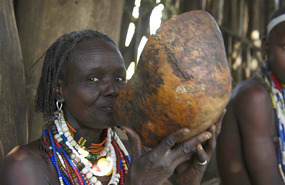
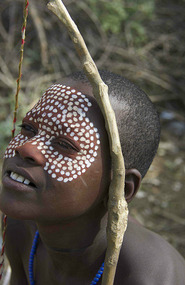
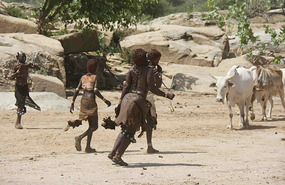
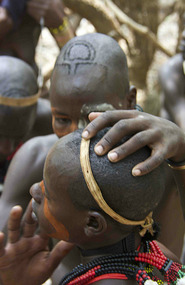
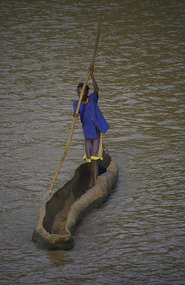
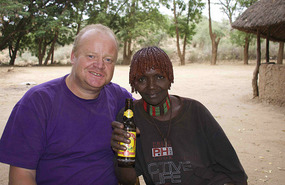









Nicholas
2014-04-11
Hi Rupert, nice blogs.. I've managed to read all of them and it's amazing read about those places you've been to. Hope you can tell me some storys one day and show me some more pictures! Take care, all the best!
Bart
2014-04-11
Hi Rupert sounds like you are having the most wonderful trip. I'm really enjoying your stories. Keep up the writing. Cheers
Sally Elliott
2014-04-12
Hi Rupert,
I have spent very spare minute of the last three days reading your blog - absolutely wonderful. Not sure we are up to the rigors of travel in Ethiopia though. Oh to be young again.
rupertcdean
2014-04-15
Hi Sally, glad you enjoyed the blog. Don't worry about Ethiopia, I met many people older than me travelling there - it just may take a bit more money, thats all. Speak when I get back from Madagascar. Best Rupert